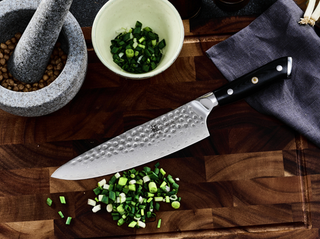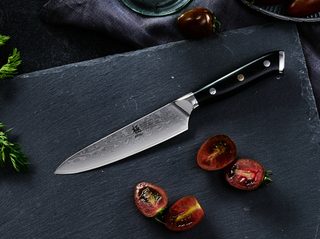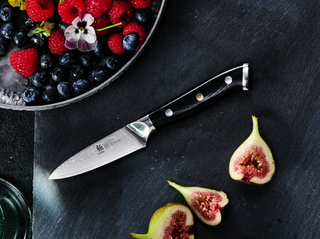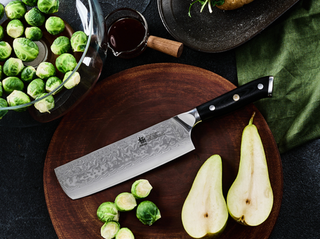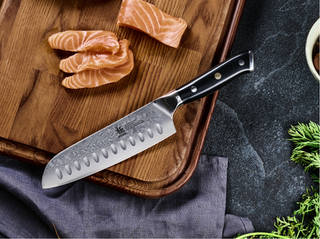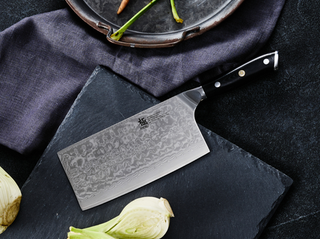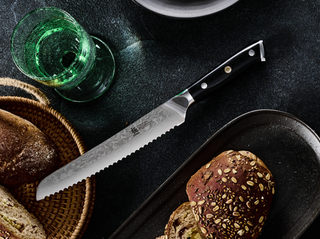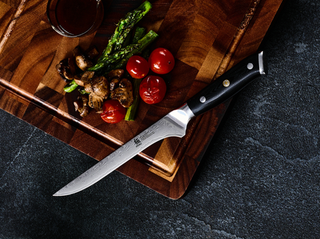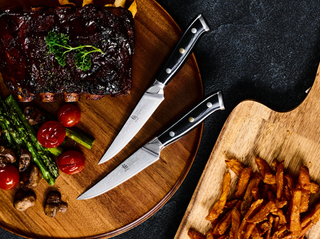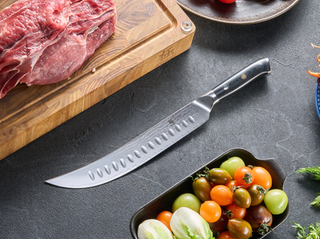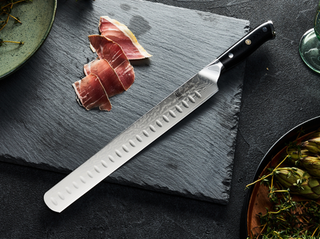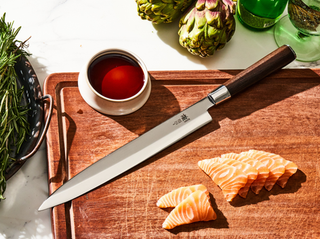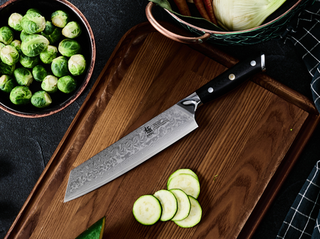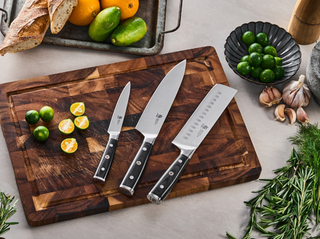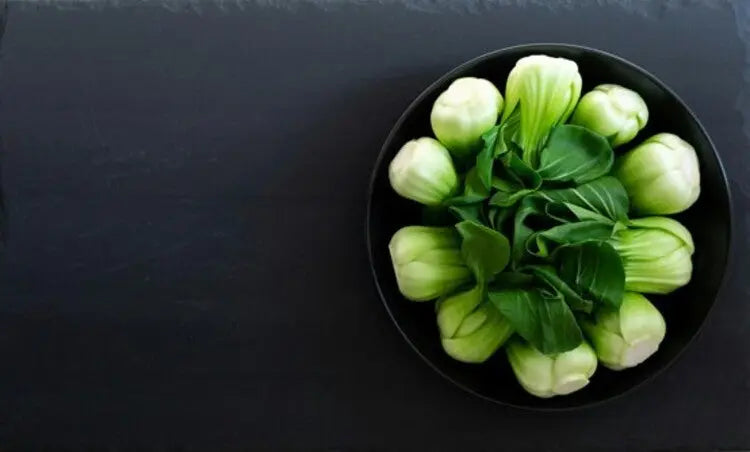While pre-washed packages sound convenient, they're often hard to find and expensive. That's why most of us end up buying whole bok choy - but then face the challenge of cleaning those sandy layers and cutting it properly for dishes like ramen. The right cutting technique makes all the difference in how bok choy cooks and tastes in your soup. Plus, this nutritious green is packed with calcium and vitamins, without the mineral-blocking oxalates found in spinach. Let's walk through how to prepare bok choy for perfect results every time.
1. What Does Bok Choy Taste Like?
If you're new to bok choy, think of it as two vegetables in one. The white stalks are crisp and mild, almost like celery but less stringy. The dark green leaves taste similar to spinach, but milder and not bitter. When cooked in ramen or stir-fries, it soaks up the broth or sauce flavors while keeping its pleasant crunch.
2. Which Parts of Bok Choy Do You Actually Eat?
Good news - you can eat the whole thing! Both the white stalks and green leaves are not just edible but packed with nutrients. According to the USDA National Nutrient Database, bok choy is an excellent source of vitamins A, C, and unlike some other leafy greens, it's low in oxalates while being rich in calcium and iron.
The only part you'll want to trim off is the very bottom base, which can be tough and sometimes brown. The stems might look thick and intimidating, but with the right cutting technique, they'll cook perfectly with the leaves.
3. How to Clean Bok Choy (Without Going Crazy)

Let's be honest - cleaning bok choy can be frustrating. Here's the easiest way we've found:
- Cut off the base first
- Separate the stalks
- Fill your sink or a large bowl with cold water
- Dunk the separated stalks and swish them around
- Let them sit for a few minutes - the sand will sink to the bottom
- Lift the bok choy out (don't pour the water out, or you'll dump the sand back on)
- Give it one final rinse
4. How to Cut Bok Choy for Ramen
For ramen, you want pieces that are easy to eat with chopsticks and cook evenly in the hot broth. Here's how:
- After cleaning, lay each stalk flat
- Cut the thicker white stems into bite-sized pieces (about 1 inch)
- Stack the leafy parts and cut them into wider strips (about 2 inches)
- Keep stems and leaves separate when adding to ramen - stems go in first since they take longer to cook

5. Cutting Bok Choy for Stir-Fry, Soup and Salads
Sometimes you want thinner pieces for a quick stir-fry, other times you need bigger chunks for soups. Here's what works best for each dish:
For Stir-Fry:
- Cut stems into thin diagonal slices (about ¼ inch) so they cook quickly
- Roughly chop the leaves into bigger pieces
- Keep stems and leaves separate - you'll add the stems first

For Soup:
- Bigger chunks are fine since they'll simmer longer
- Cut stems into 2-inch pieces
- Leaves can be left in larger pieces
- They'll shrink as they cook, so don't cut them too small
For Fresh Salads:
- Slice stems very thinly (like you would for coleslaw)
- Cut leaves into thin ribbons
- This makes it easier to eat raw and looks nice too
6. Tips for Perfect Results Every Time
- Sharp knife makes a huge difference - dull knives will crush instead of cut
- Always cut stems and leaves separately
- Dry your bok choy after washing if you're stir-frying (wet bok choy will steam instead of staying crisp)
- For ramen and soups, a little water doesn't matter

7. Best Knives for Cutting Bok Choy
You don't need a fancy knife to cut bok choy well, but having the right type helps a lot. Japanese knives work great because they're typically sharper and more precise than Western-style knives. Here's what we recommend:
A Santoku knife works perfectly because:
- The wide blade helps scoop up cut pieces
- It's lighter than a Western chef's knife
- The sharp edge makes clean cuts through both leaves and stems
I recommend the Kyoku 7-inch Santoku knife for preparing bok choy - it's ideal for vegetable prep and comes at a good price point for home cooks.
8. Storage Tips to Keep Your Bok Choy Fresh
- Don't wash before storing - moisture leads to wilting
- Keep it in the crisper drawer of your fridge
- Wrap loosely in paper towels and place in a plastic bag with some air holes
- Fresh bok choy should last about 3-5 days
- If the leaves start wilting but stems are still firm, it's still good for soups
9. Frequently Asked Questions About Preparing Bok Choy
How do you know if bok choy has gone bad?
If your bok choy has black or brown spots, feels slimy, or smells off, it's time to toss it. But don't worry if the leaves are slightly wilted - they're still fine for soups and stir-fries. Just trim off any yellowed parts and use the fresh portions.
Should you eat bok choy raw or cooked?
You can enjoy bok choy both ways! Raw bok choy is great in salads when cut very thinly. For soups and stir-fries, cooking helps soften the stems and brings out its natural sweetness. If you're new to bok choy, try it in ramen first - the hot broth cooks it perfectly.
Why is my bok choy bitter?
Bitter bok choy usually means it's either old or overcooked. Using a sharp knife (like Santoku knife) prevents crushing the cells, which can release bitter flavors. Quick cooking methods and fresh ingredients make all the difference in getting that sweet, crisp taste.
Should the fibrous parts of bok choy be removed?
The white stalks of bok choy may contain fibers, and trimming older or tougher parts can improve texture. However, most of the white stalk is tender and nutritious, so it can be cooked as is.
Can bok choy be frozen?
Freezing bok choy is generally not recommended because it damages the texture, making it soft and mushy when thawed. It’s best consumed fresh or within a short time.
What seasonings go well with bok choy?
Bok choy has a fresh and mild flavor, pairing well with soy sauce, oyster sauce, minced garlic, and ginger slices. Simple seasonings help enhance its natural taste.
How to prevent bok choy from releasing too much water when stir-frying?
Make sure to drain bok choy thoroughly before cooking, use high heat, and stir-fry quickly to avoid water pooling in the pan. This will keep bok choy crisp and tender.
Conclusion

The key to enjoying this versatile vegetable is proper preparation. With the Santoku knife and these cutting techniques, you'll get perfect results whether you're making a quick stir-fry or a comforting bowl of ramen.
Good tools make good food - explore Kyoku collection of Japanese knives to make your vegetable prep easier and more enjoyable.
